Throughout this expedition, the Oden has encountered ice that she needed to break through, and watching this process has been fascinating. The Oden is unique among icebreakers because she does not "break through" the ice with a reinforced pointed hull. Instead, she rides UP on the ice with her flat, rounded bow and crushes the ice underneath. She has a special "flushing" system which sprays water, warmed by the engines, in front of the bow, lubricating the ice for easier movement over it. She also has a "heeling" system, which is comprised of two large tanks in the bow, connected by a huge pipe and pumps which quickly transfer water from the port (left) tank to the starboard (right) tank. This allows the Oden to intentionally "rock" from side to side to better crush the ice. In fact, she can almost "climb" up on the ice using this system!
In areas where the smaller ice floes were widely spread out, the Oden just pushed ahead, the floes moving to either side as the ship passed by. As the ice floes increased in size, the ship would hit the ice and we would watch as a cracks opened up in the ice, first narrow, then widening and widening until the floes broke into smaller pieces and passed by.
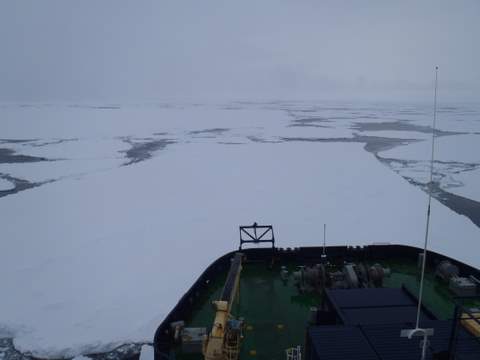
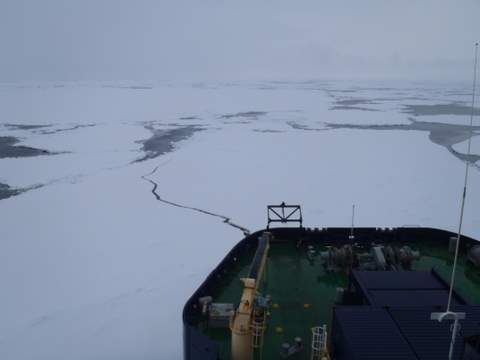
Some ice chunks would be pushed under the Oden, only to emerge on the side of the ship, popping up like a cork. When the ice pieces turned over, we could see the brownish colored algae that was growing underneath.
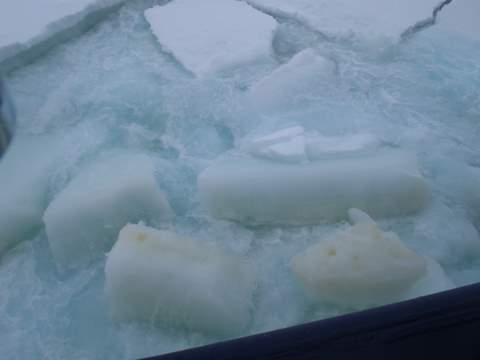
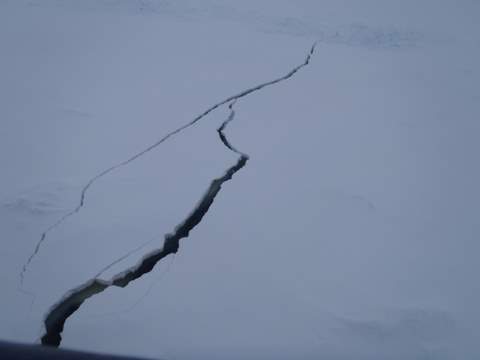
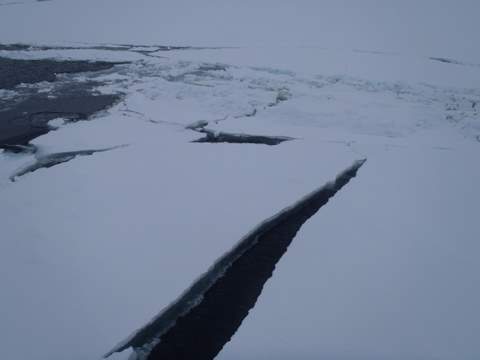
The Oden was contracted to icebreak a channel into McMurdo Station so that other ships could get into the US science station. The Nathanial B. Palmer was a few days behind us, also on their way into McMurdo. Then supply ships will also be coming into the station, as well as other science ships and sometimes even a tourist cruise ship or two. Supply ships are essential for bringing fuel, vehicles, building supplies and larger science items, as well as for taking away all the garbage and waste generated by over 1000 people who live and work at McMurdo. Airplanes can land at McMurdo from late September to early March (depending on weather,) but ships can only get through from January to early March, and only if an icebreaker clears the channel, so Oden had a very important job to do. But the ice in McMurdo Sound is "fast" ice -solid, unbroken ice attached to the continent, and would require a different type of ice breaking than we had experienced earlier on this expedition.
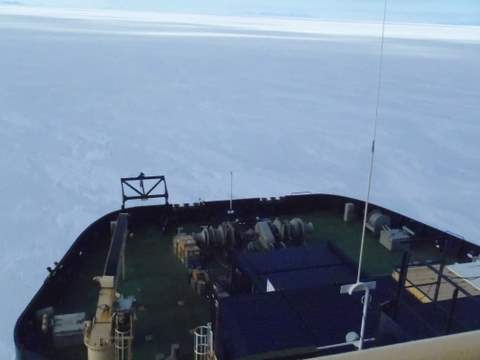
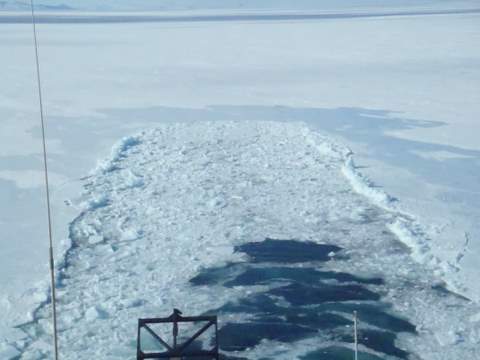
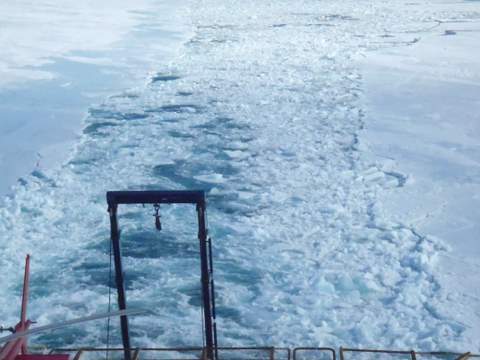
The ice in McMurdo Sound is turning out to be thicker and stronger than anticipated. The Oden pushes ahead about 1-2 ship lengths over and through the thick ice before she comes to a stop. Then she is put into reverse and backs up along the path she just broke. The officer at the helm then sets a new course next to the broken ice, overlapping it a little. The Oden pushes forward again, widening her original path. When she rides up on the unbroken ice, the ships rocks and rolls jerkily from side to side, with loud crunching and grinding sounds. Then we have a few seconds of silence, before she reverses into the ice "debris, " now shaking and rattling like shaking a tin can full of rocks. Then, another few seconds of silence as she stops, then moves forward again, loudly breaking a new path. And this continues day and night! I sleep with ear plugs to dull the noise, which seems to help a little, but we aren't getting a lot of quality sleep right now! The ship is averaging about 1 nautical mile of forward progress every 4 hours, and we have about 20 miles of ice to break to get to McMurdo Station.
The "best case" scenario of 3-days icebreaking and arriving into McMurdo Station on January 13 and the science team flying out to New Zealand on January 14 is not going to happen. Now we have an anticipated arrival into the station late on the 14th and tentative plans to fly out on January 15. I understand why everyone emphasizes "FLEXIBILITY" and "RESHEDULED" when discussing travel plans in Antarctica! But even with these delays, i will agree with the Oden's claim that she is "probably the best icebreaker in the world."
Click here to see some of the ice breaking process
http://


Comments